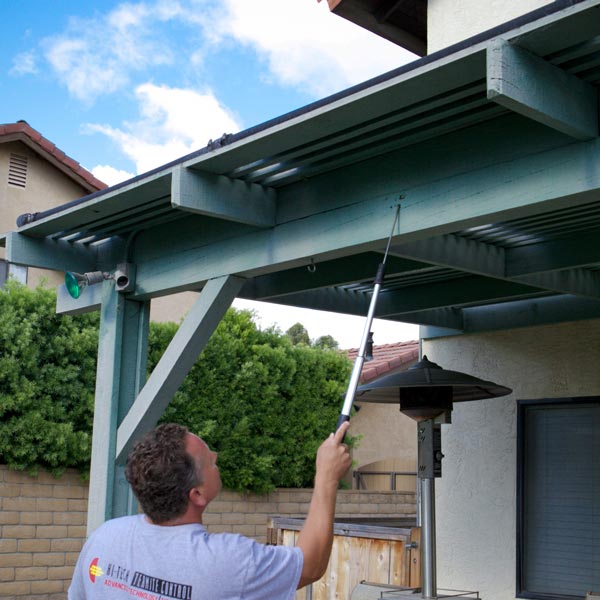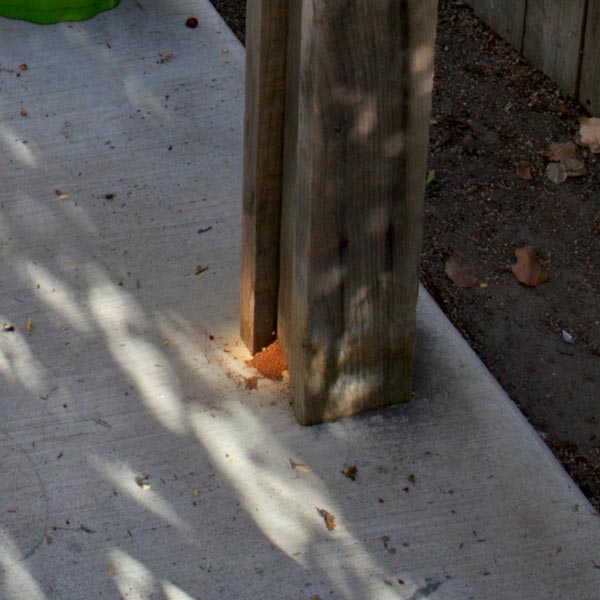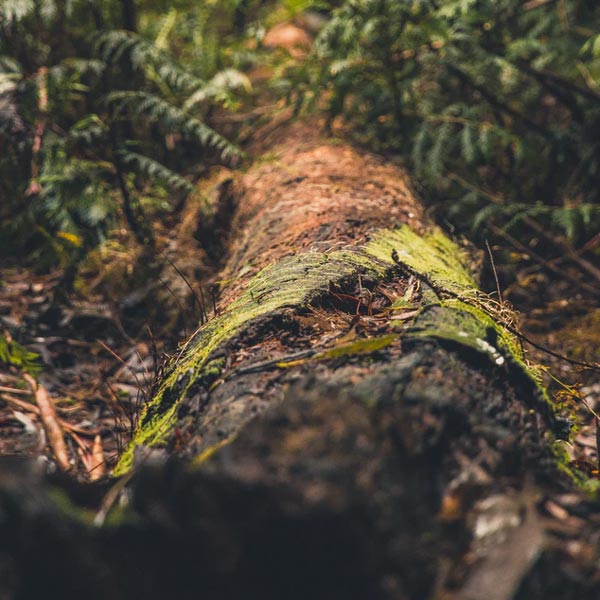What Do Termites Look Like?
Termites are often confused with ants, so if you’re wondering what do termites look like, a side-by-side comparison to ants should clear things up. There are various types of termites, and they can often be mistaken for carpenter and fire ants. While ants and termites can look very similar, especially at particular stages of their lifecycle, when we take a closeup look, termite identification is more manageable.
Both ant species have winged swarms and swarm most typically during spring and occasionally throughout the year, but termites can swarm during spring, summer and fall. Subterranean termites lose their wings soon after swarming to make their descent easier. You may find piles of wings in various places around your house, though mainly by window sills and other areas of sunlight.
What Do Termites Look Like Compared to Carpenter Ants?
What do termites look like compared to ants? Carpenter ants and termites share many similarities, the most distinctive being that they both can cause significant damage to homes. Termites are about the same size as many species of carpenter ants, they both burrow into wood, and they both swarm in the spring to mate.
Since ants and termites require different control treatments, it’s essential to know how to differentiate the two. You may need a magnifying glass or reading glasses to identify termites, and here’s what you’re looking for:
Body: One of the easiest ways to differentiate carpenter ants from termites is to examine the abdominal area. A termite has a body that is somewhat rectangular, without a waist. The carpenter ant has a well-defined waist and bodily sections.
Antennae: Termites have straight, beaded antennae, whereas carpenter ants’ antennae are bent at an angle.
Wings: Termites and carpenter ants both have four wings. A termite has wings that are longer than its body, and they are of equal size and shape. A carpenter ant has hind wings that are shorter than its forewings. It’s important to note that termites shed their wings, while carpenter ants don’t. ,/
Color: Carpenter ant workers are dark red and are frequently seen in the open foraging for food. Termite workers are transparent, or a creamy white, and they avoid light. Termites are rarely visible unless their mud tubes or nest is disturbed.
Behavior: Subterranean termites are attracted to healthy wood, while carpenter ants are attracted to moist and damaged wood. Termites actually eat the wood where they infest, while carpenter ants only remove wood to create nests. Instead of eating the wood like termites, carpenter ants push wood debris out of the nest’s entry hole.
Tunnels: The tunnels and galleries created by carpenter ants are very smooth and finished. Termites create tunnels that are ragged because they line them with layers of mud.
Mud Tubes: Termites build mud tubes to protect themselves from light and dry air, and we often see these tubes on outside walls or in crawl spaces. Termite mud tubes run from beneath the soil up into the frame of a home and are a sure sign you can have an active termite infestation. Carpenter ants don’t build mud tubes.
Droppings: Another sure sign you have a termite problem is termite droppings. Remember, ants don’t eat wood, but termites do, so termite droppings can take on the coloration of the wood they ingest. The easiest way to spot termite fecal matter is by its size, shape, and location. Look for pellets about a millimeter long with six sides. These pellets will look like salt and pepper in small piles near entry holes.
If you spot winged insects in or around your home, play it safe and collect a sample for identification. You can compare your sample to images found online, or we’ll be glad to confirm whether you have termites or not.
How Big Are Termites?
Even though we know termite size is typically about the same size as several ant species, you may still be wondering how big are termites? The answer depends on the species and the stage of the life cycle. All termites begin as tiny eggs and evolve into nymphs and then larvae. The termites at these stages are so small they’re hard to see with the naked eye. After several weeks, larvae evolve into the adult stages. These adult life cycle stages are where some of the size differences of termite species are most distinct.
Larvae can evolve to become workers, soldiers, and, if they’re lucky, reproductives that become the king and queen of the next colony. Regardless of the termite species, reproductive kings and queens can be over one inch long, and some queens can even reach a length of more than two inches. Even without wings, the king and queen termites are the largest termites in the colony.
How Big Are Subterranean Termites?
Subterranean termite workers are the smallest of the species’ adults and are usually anywhere from ⅛” to ¼” length. The soldiers in a subterranean termite colony may be slightly longer, but their larger heads and mandibles can make them look much larger than the workers. The subterranean termite queen is typically the largest of all termite species queens and can grow to be well over two inches long.
How Big Are Drywood Termites?
Adult drywood termite workers and soldiers average about ¼ to ⅜” in length but can continue to grow if they gain reproductive ability. Like the subterranean termite soldier, drywood termite soldiers’ bodies are typically the same size as workers, but their heads and mandibles are oversized. The queen of the drywood termite colony will typically be smaller than her subterranean or dampwood counterpart, but they are still the largest termite in the colony.
Termite Identification Made Easy
All species of termites look different at each stage of development, so it’s important to know how to identify termites through their natural cycle. It’s important to know not only termite size but also what color are termites at different stages and from different species.
Flying termites, also known as termite alates, are likely the most commonly seen stage of the species. Remember, ants and termites have wings that are easy to differentiate, but the telltale sign you have termites are the shed wings all over the ground. This is because male ants die after mating, while female termites shed their wings and return to the colony. Find out more about what to look for in our guide on signs of termites and damage.
Here’s how to identify termites in the colony:
Larvae and Eggs
Termite larvae, also referred to as “immatures,” are a pale white color and molt several times before taking on their role in the colony. Eggs are smaller than larvae and are usually a translucent white or pale brown. Besides their appearance, eggs and larvae can be identified by the multitude of other termites who take care of them until they mature.
Nymphs
Termite nymphs can grow up to be a worker, soldier, or a reproductive. Long-winged termite nymphs eventually become swarmers, and short-winged nymphs become reproductives or assume other roles. Termite nymphs are slightly larger than termite larvae, and their coloring more resembles adult termites.
Worker Termites
Worker termites, the most destructive termites in the colony, are pale white like nymphs but are bigger and have a hard shell. These hardworking termites build the colony and feed the other termites by foraging and tunneling—leaving behind billions of dollars of property damage each year.
Soldier Termites
Soldiers are more distinct than workers or nymphs, with yellow-brown or pale red coloring. They are larger than workers and have imposing and powerful mandibles for defending the colony. And, yes, they will bite.
Queen and King Termites
It’s highly unlikely you’ll ever spot a King or Queen termite because they never leave the nest. FYI, they’re both dark-colored with identical pairs of wings.
Now that you know more about termite identification within a developed colony, it’s time to learn how to identify termites from different species. This page will help you determine which type of termite you may have in your home.
The termites listed below may be workers, soldiers, or swarmers, and in most circumstances, only swarm one to two times a year. Unless you can identify and find the location of these termites, you may not know you have a termite problem until you find dead swarmers or wings.

The Drywood Termite
This type of termite is common, especially in California. Due to their blackish wings, drywood termites can be easily confused with carpenter ants. These termites live in low-moisture climates and feed and nest in undecayed wood. They do not require contact with soil to live and can cause serious damage to most types of wood. Drywood termites are most commonly found along the coastline from south Florida to the northern Pacific coast of California.
The drywood termite nest is created by a pair of male and female termites. To build and protect the nest, the hole in which they enter is sealed off with a brownish cement-like material. This hole is about 1/8 of an inch, and behind this sealed area, a chamber is excavated for the queen to lay her first eggs. These eggs later become larvae, then nymphs. These nymphs become soldiers and reproductives and don’t have a distinct caste system like subterranean termites do.
Drywood termites create small tunnels that connect large chambers cut across the grain of the wood. Small openings in the wood are used for excretions and other debris to help keep the tunnels clean. The excrement from termites, known as frass, is a distinguishing characteristic of non-subterranean termites. Six concave surfaces on the sides make these pellets distinct from the rounded convex surfaces of the pellets left by other pests like beetles.
A simple crack in any wood surface can be an entrance for these pests and can be as simple as a space between two pieces of wood or wood and other materials. Because drywood termites can live in wood without soil, they can easily travel inside of furniture from place to place, even in regions where they are not common.
Wood of all kinds attracts drywood termites such as structural timbers, woodwork in buildings, furniture, and more. Though these types of termites can cause less damage than subterranean termites, if left untreated, even a colony as small as 10,000 termites can wreak havoc.

The Subterranean Termite
It’s important to know how to identify termites if you can’t find evidence of swarming. Mud tunneling is the most obvious sign of subterranean termite infestation. They travel through tubes constructed of dirt and an acidic secretion that connect to the colony. These shelters protect the termites from predators and light that can be harmful to workers.
These mud shelters are usually very hard-packed and only get harder as they get older and larger. The size of these tubes varies from as small as a pen diameter to several inches wide. We usually find these tubes on the sides of foundation walls, and at times subterranean termites emerge through sheetrock walls and ceilings. They can even enter through plumbing, toilets, showers, and tubs and make tubes around plumbing.
Subterranean termites should be taken seriously, and if you think you have them, you should act quickly. Though these critters may be tiny, the damage that follows could destroy your entire home in as little as a year and a half. Seek out termite control solutions right away if you see signs of termites!

The Powderpost Termite
Powderpost termites are mainly found in the humid coastal areas of the southern states and along the Pacific coast to northern California and Hawaii. These termites are more commonly known as “furniture” termites because they infest timber type furniture.
Powderpost termites invade the structural timbers of buildings, furniture, and other dry timbers having less than 12% timber moisture content. This termite species requires no ground contact and gets their required moisture intake from the timber they infest. They have many of the same characteristics as drywood termites, though they eat at a slower rate and have fewer termites in their colonies.

The Dampwood Termite
Dampwood termites can be found in warm, humid areas, like the Florida coastline, but are most commonly found along the Pacific Coast. Dampwood termites, unlike drywood termites, live in moist wood such as fallen limbs, stumps, and rotting logs. The wood provides them with ample food and shelter. This means they don’t forage or leave the colony, except for the winged females who can swarm from January through October, but typically in summer. These dampwood termite alates mate and start fresh colonies, usually not too far from the original colony. With an appetite for spring and summer wood, you can find dampwood termite infestations eating away at anything from woodpiles to the structural wood of your home.
The colony excavates chambers, connects them with smooth-walled tunnels, and uses their fecal pellets to seal each chamber to preserve the moisture in the environment. The adult dampwood termite is larger than other species and is typically dark to light brown, while the nymphs are a pale cream color. The most common culprits behind a dampwood termite infestation are home leaks or drainage issues that create moisture in the home’s wood structure.
How to Know For Sure If You Have Termites
With a clearer understanding of how to identify termites using our termite identification guide, the next step is a professional termite inspection and treatment. If you want to know if you have termites, the best course of action is to call a professional for a termite inspection. You can count on Hi-Tech Termite Control for professional inspections and proven termite treatments throughout Southern California, including Los Angeles, San Diego, and Orange County — simply give us a call or schedule a free inspection online today.